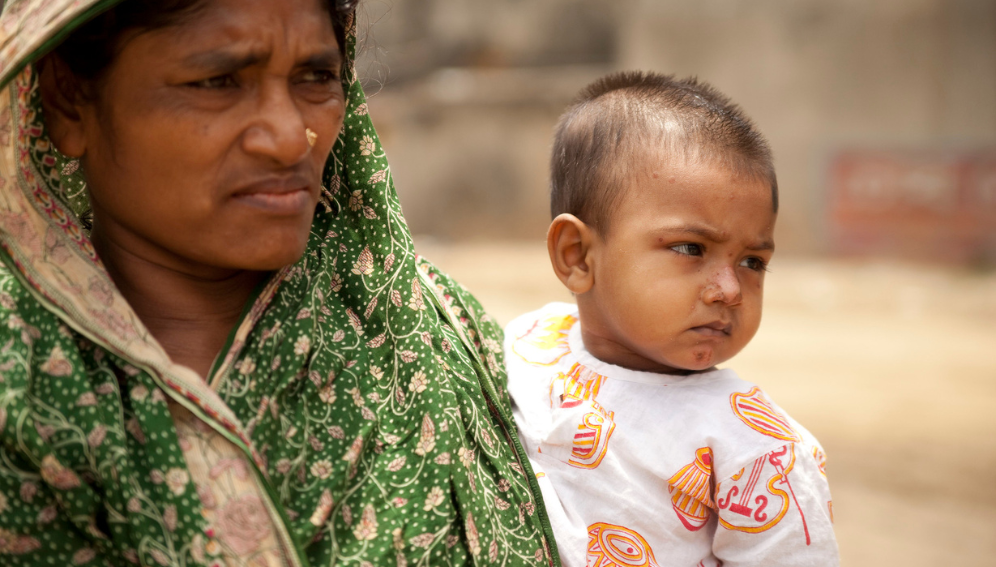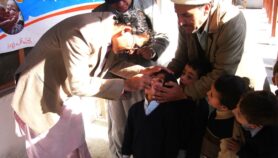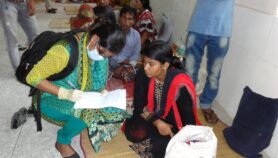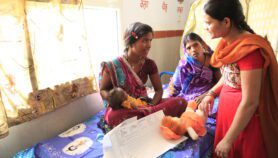21/12/23
Infants at higher risk in flood-prone areas of Bangladesh

By: Claudia Caruana
Send to a friend
The details you provide on this page will not be used to send unsolicited email, and will not be sold to a 3rd party. See privacy policy.
[NEW YORK] A team of researchers have measured the burden of living in flood-prone areas of Bangladesh and found that it significantly raises the likelihood of children dying by their first birthday.
Climate change is expected to bring more frequent and extreme flooding events in the coming decades.
“This is particularly true in Bangladesh, a country with low elevation and where annual monsoons bring extensive flooding to the Ganges–Brahmaputra–Meghna river basin,” says the study, published this month in the Proceedings of the National Academy of Medicine and Infectious Diseases.
Focusing on this south Asian country, the researchers sought to quantify the long-term consequences of climate change.
“We wanted to document what happens when year after year some communities are exposed to these climate hazards,” said Tarik Benmarhnia, a co-author of the study and an associate professor at the Scripps Institution of Oceanography, in California, US.
Child mortality figures, according to Benmarhnia, are also an indication of numerous health problems among infants.
“Child mortality is a proxy for easily avoidable negative health outcomes,” he explained.
“If we can’t avoid child mortality, there are also likely to be issues with malnutrition, mental health, and communicable diseases.
“From a public health perspective infant mortality is only the tip of the iceberg.”
Using high-resolution maps of recent large floods, the researchers identified the flood-prone areas in the country.
They analysed this information alongside health data collected by USAID Demographic and Health Surveys Program between 1988 and 2017.
According to the researchers, there was an increase of more than 152,000 infant deaths in flood-prone areas of Bangladesh over the 30-year period.
This represents an eight per cent higher risk of dying in the first year of life or 5.3 additional infant deaths per 1,000 births.
They also found that children born during rainy months faced a higher risk of death than those born in dry months.
Co-author Benjamin Arnold, an associate professor at the University of California San Francisco, said the research helped show the true extent of extreme weather events like flooding.
“This study’s results provide new motivation to keep an eye on significant, longer-term health impacts of extreme weather events, such as infant mortality, in addition to the more obvious impacts that we see in the days and weeks that follow,” he said.
The authors believe that the approach used in the study could also be useful in studying the long-term health effects of other climate-related hazards such wildfires and extreme heat.
Javier Mateo-Sagasta, senior researcher at the International Water Management Institute, Sri Lanka, says the study addressed a gap in research in quantifying the broader health impacts of floods, as opposed to those related to injury and drowning, water pollution, or the spread of infectious diseases.
Preventative action
Mateo-Sagasta told SciDev.Net that it will be essential to adapt to increasingly frequent and intense floods and mitigate the health risks.
“There should be early warning systems that allow government to anticipate the potential health risk from floods and take preventive action such as getting healthcare facilities ready for flood-related admissions,” he said.
“There should be climate-resilient sanitation safety plans and WASH [water, sanitation and hygiene] infrastructure should be flood resilient.”
He added that policies should incorporate the One Health approach which addresses human, animal and ecological determinants of health.
More research is also needed, says Mateo-Sagasta, to fill knowledge gaps in the interface of water, climate change and human health, including water quantity and quality modelling, to help build climate resilience.
This piece was produced by SciDev.Net’s Asia & Pacific desk.













